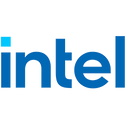
Intel Releases OpenVINO 2022.1 to Advance AI Inferencing for Developers
Since OpenVINO launched in 2018, Intel has enabled hundreds of thousands of developers to dramatically accelerate AI inferencing performance, starting at the edge and extending to the enterprise and the client. Today, ahead of MWC Barcelona 2022, the company launched a new version of the Intel Distribution of OpenVINO Toolkit. New features are built upon three-and-a-half years of developer feedback and include a greater selection of deep learning models, more device portability choices and higher inferencing performance with fewer code changes.
"The latest release of OpenVINO 2022.1 builds on more than three years of learnings from hundreds of thousands of developers to simplify and automate optimizations. The latest upgrade adds hardware auto-discovery and automatic optimization, so software developers can achieve optimal performance on every platform. This software plus Intel silicon enables a significant AI ROI advantage and is deployed easily into the Intel-based solutions in your network," said Adam Burns, vice president, OpenVINO Developer Tools in the Network and Edge Group.
"The latest release of OpenVINO 2022.1 builds on more than three years of learnings from hundreds of thousands of developers to simplify and automate optimizations. The latest upgrade adds hardware auto-discovery and automatic optimization, so software developers can achieve optimal performance on every platform. This software plus Intel silicon enables a significant AI ROI advantage and is deployed easily into the Intel-based solutions in your network," said Adam Burns, vice president, OpenVINO Developer Tools in the Network and Edge Group.






























































